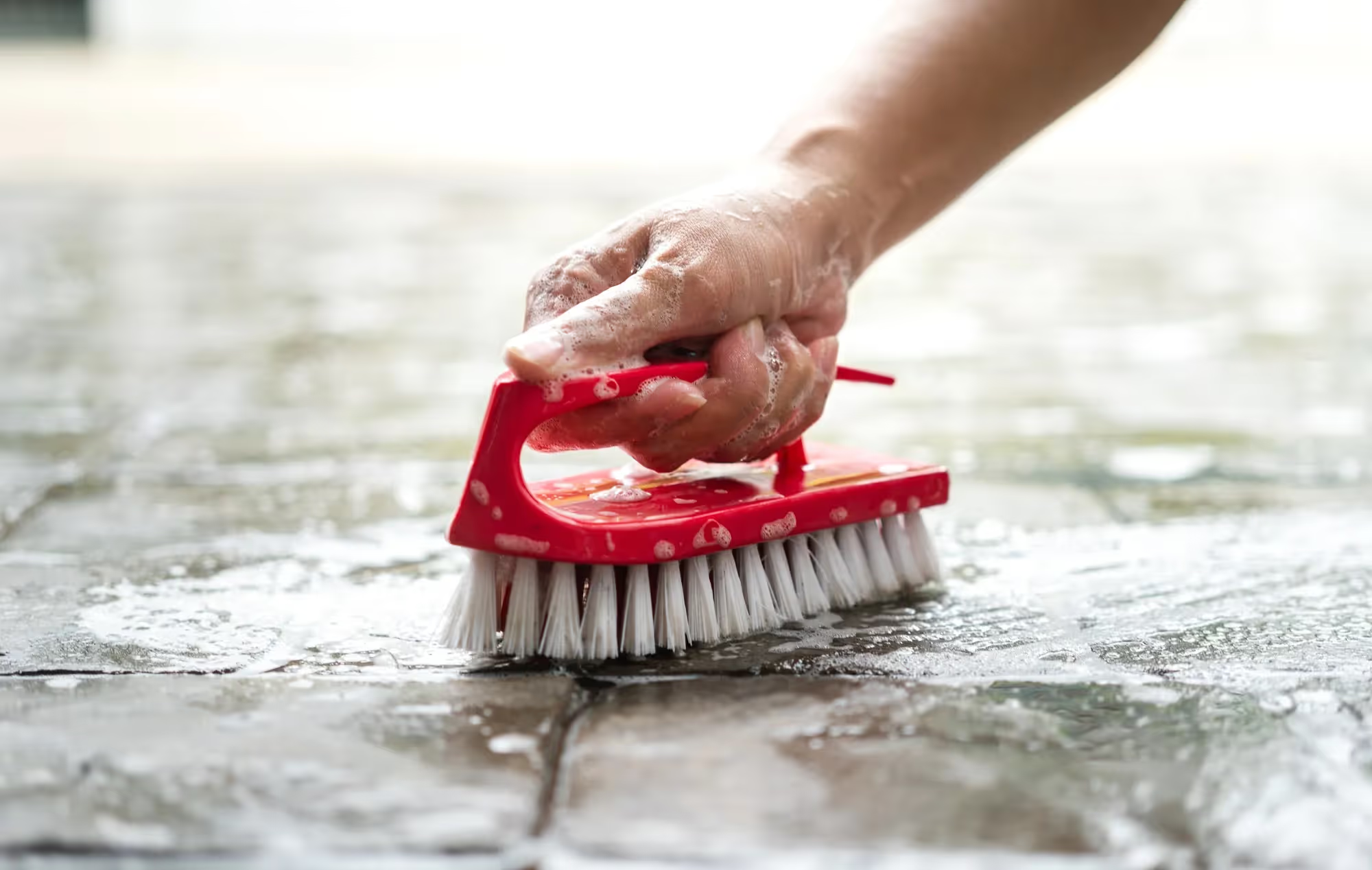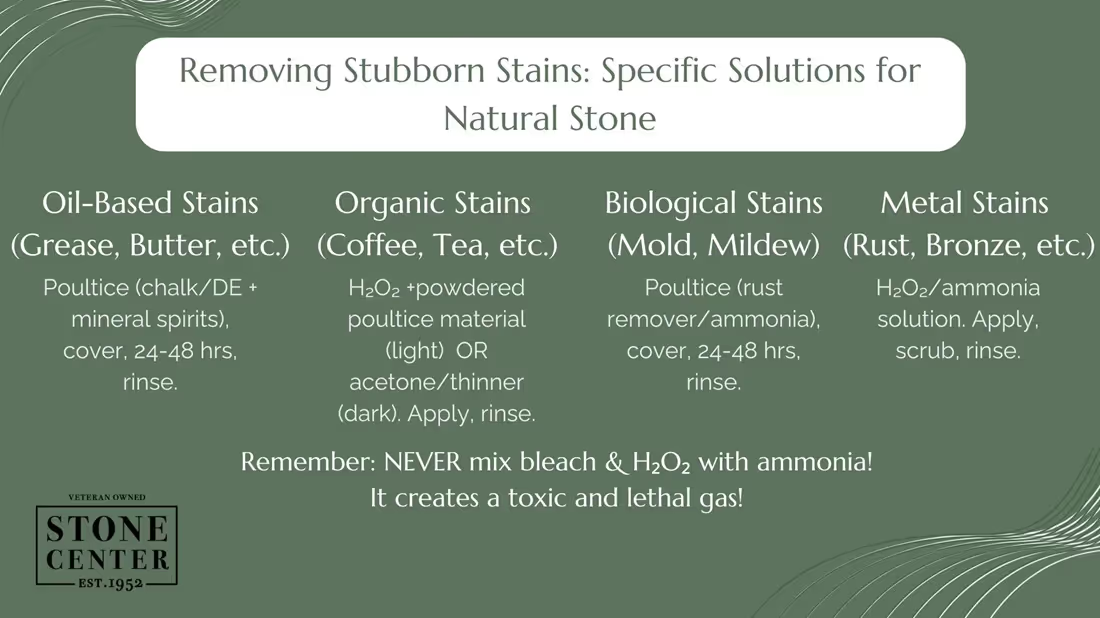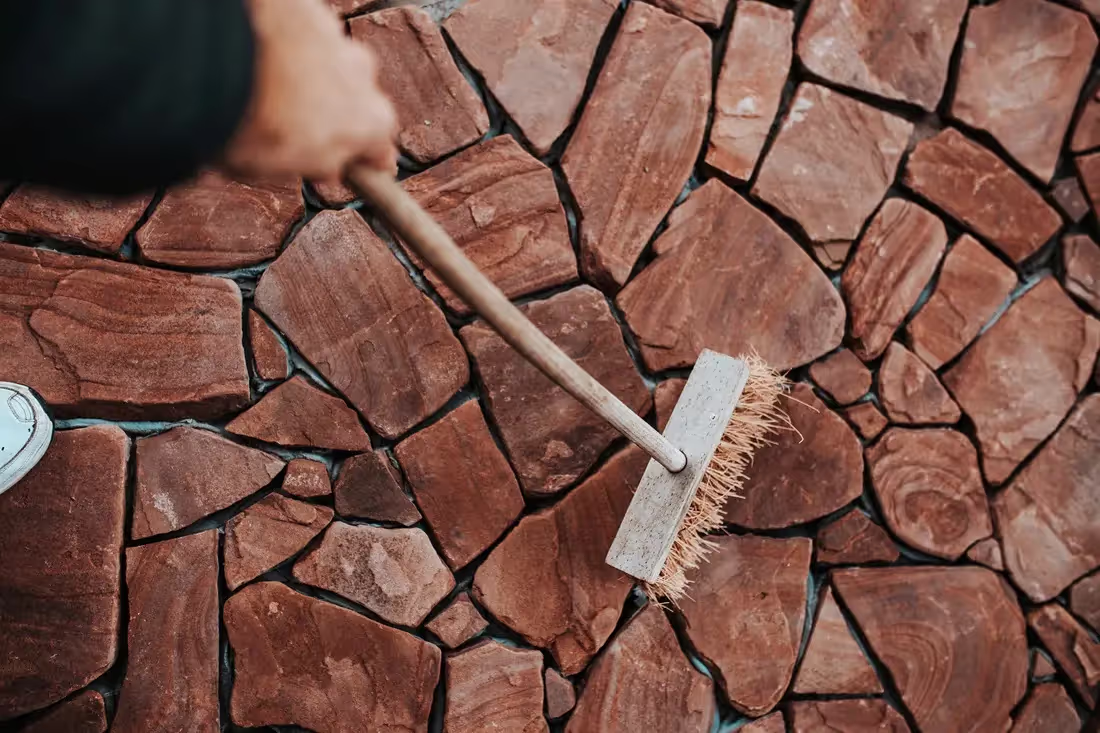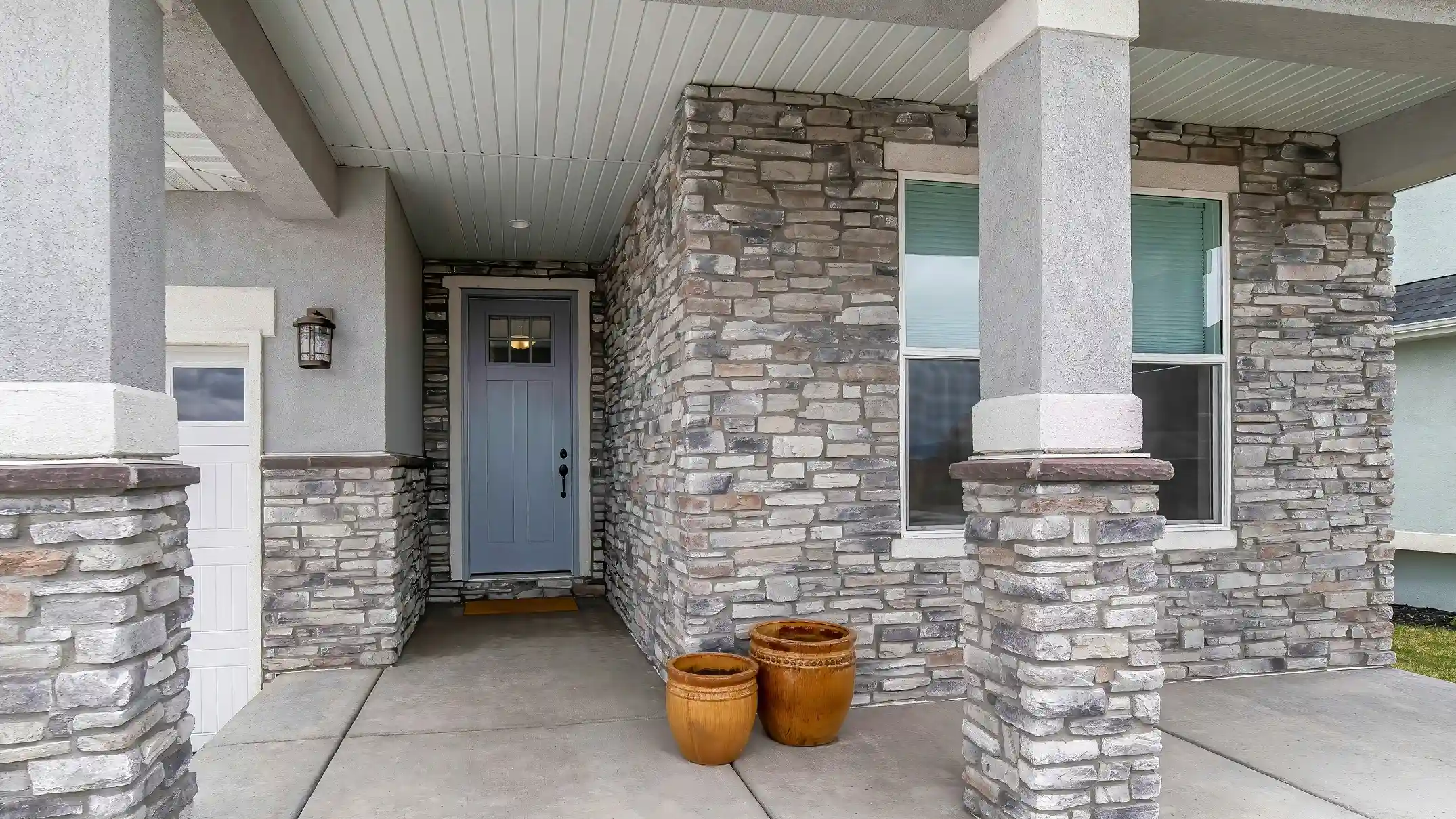- Stone Center
- Blog
Stone SOS: Removing Stains from Your Natural Stone (Like a Pro!)
24/10/2024
8/16/2024
Stone SOS: Removing Stains from Your Natural Stone (Like a Pro!)

Natural stone surfaces are a beautiful and valuable addition to any home, offering timeless elegance and durability. However, even the most well-maintained natural stone can fall victim to stubborn stains. While many stains can be tackled with the right cleaning agents and techniques, some situations call for the expertise of a professional stone restoration specialist.
Whether it's a spill from cooking oil, a splash of wine, or a dropped piece of fruit, knowing how to get a stain out of stone is crucial for preserving its beauty. In this article, we'll reveal insider secrets and proven methods for effective stain removal to help you keep your natural stone surfaces looking flawless. And if you’re facing particularly stubborn stains or concerns about damaging your stone, remember that a professional, like Stone Center, can offer the safest and most effective solutions.
General Stain Removal Steps

When a stain occurs on your natural stone surface, the key is to act quickly to prevent it from setting in.
Follow these general steps for the best results:
- Blot the stain with a clean, dry cloth or paper towel as soon as possible. Avoid wiping the area, as this can spread the stain and make it harder to remove.
- Flush the stained area with plain water and mild soap, then rinse thoroughly. Repeat this process several times to remove as much of the stain as possible.
- If the stain remains, try applying a thick paste made from baking soda and water directly onto the stain. Let it sit for several hours or overnight, then rinse with water and dry with a soft cloth.
- For more stubborn stains, you may need to use a poultice or a cleaning agent specifically designed for the type of stain and stone surface you're dealing with.
Remember to always test any cleaning agent or method on a small, inconspicuous area first to ensure it won't damage your natural stone surface.
Specific Stain Removal Methods

Remember: Do NOT mix bleach & H₂O₂ with ammonia – a toxic gas results from this combination!
Depending on the type of stain you're dealing with, you may need to use a specific cleaning agent or technique to effectively remove the stain from your natural stone surface. Here are some proven methods for tackling common types of stains:
- Oil-based stains: Create a poultice using powdered chalk or diatomaceous earth mixed with mineral spirits. Apply the poultice to the stained area, cover it with plastic, and let it sit for 24-48 hours. Remove the poultice, rinse with water, and dry with a soft cloth.
- Organic stains: For light-colored stones, combine 12% hydrogen peroxide with a powdered poultice material (like powdered chalk or diatomaceous earth). For dark stones, use acetone instead of hydrogen peroxide. Apply the poultice to the stain, cover it with plastic, and let it sit for 24-48 hours. Remove the poultice, rinse with water, and dry with a soft cloth.
- Metal stains: For iron stains, create a poultice using diatomaceous earth and a commercially available rust remover. For copper and bronze stains, use a poultice made with powdered chalk and ammonia. Apply the poultice, cover, and let it sit for 24-48 hours before removing and rinsing.
- Biological stains: Mix equal parts water and hydrogen peroxide (12%) or dilute ammonia. Apply the solution to the stain, let it sit for several minutes, then scrub gently with a soft brush. Rinse thoroughly and dry. Another reminder to never mix bleach and ammonia, as this creates a toxic gas.
Using a Poultice for Stubborn Stains

For particularly stubborn stains that don't respond to general cleaning methods, using a poultice can be an effective solution. A poultice is a thick paste made from a white absorbent material (like white molding plaster, powdered chalk, or baking soda) mixed with a cleaning agent.
To create and apply a poultice:
- Mix your chosen poultice material with the appropriate cleaning agent until it forms a thick paste.
- Apply a 1/4 to 1/2-inch thick layer of the poultice directly onto the stained area, extending beyond the stain by about an inch.
- Cover the poultice with plastic and tape down the edges to seal it.
- Allow the poultice to dry completely (usually 24-48 hours). The drying process is what pulls the stain out of the stone and into the absorbent material.
- Remove the plastic and the dried poultice, then rinse the area with distilled water and dry with a soft cloth.
- Repeat the process if necessary for particularly difficult stains.
If the poultice leaves behind an etch mark, you can use marble polishing powder to restore the shine to your marble surface.
Dos and Don'ts of Cleaning Natural Stone Surfaces
To maintain the beauty and longevity of natural stone surfaces in your properties, it's essential to follow best practices when cleaning. Here are some key dos and don'ts to keep in mind:
Dos:
- Use pH-neutral cleaners specifically designed for natural stone.
- Blot up spills immediately with a clean, dry cloth or paper towel.
- Regularly dust mop or vacuum to remove loose dirt and debris.
- Seal your natural stone surfaces as the manufacturer recommends.
- Always test cleaning products in an inconspicuous area first.
Don'ts:
- Use acidic or abrasive cleaners that can etch or scratch the stone.
- Apply cleaning products directly onto the stone surface; instead, apply to a cloth or mop.
- Use excessive water when cleaning, as this can lead to staining and damage.
- Mix different cleaning products, as this can result in harmful chemical reactions.
- Attempt to remove stubborn stains without consulting a professional.
When to Call a Professional
While many stains can be removed with the right cleaning agents and techniques, there are some cases where it's best to call in a professional stone restorer. Here are a few scenarios where expert help may be needed:
- If you have a particularly stubborn stain that doesn't respond to home remedies or poultice treatments.
- If your natural stone surface has become etched, scratched, or otherwise damaged.
- If you're unsure about the type of stain or the best course of action for removing it.
- If you have a valuable or delicate natural stone surface and don't want to risk causing further damage.
For the best results and to ensure the longevity of your natural stone surfaces, consider seeking professional help. Even with proper sealing, natural stone experiences wear and tear that requires occasional attention. At Stone Center, we believe in restoring, not replacing, and our expert team has mastered the art of bringing natural stone back to its former glory.
Types of Natural Stone
Now that we've covered the various stain removal techniques and when to call a professional, let's take a moment to understand the unique characteristics of different natural stone types. By familiarizing yourself with the properties and porosity of each stone, you'll be better equipped to tackle stains on your own in the future, using the most appropriate cleaning methods and products for your specific surface.
- Granite: Known for its exceptional durability and resistance to scratches and stains. Its low porosity makes it an ideal choice for high-traffic areas like countertops, floors, and public spaces. However, it's important to note that some lighter colors of granite may be more porous and require additional sealing.
- Marble: While it is more porous than granite, making it more susceptible to stains, its unique appearance continues to make it a sought-after choice for commercial properties. Regular sealing and prompt stain removal are essential for maintaining marble's beauty.
- Limestone: Its high porosity makes it more vulnerable to stains, particularly from acidic substances. Limestone requires regular sealing and gentle cleaning methods to prevent damage and maintain its appearance.
- Travertine: Its porosity falls between that of marble and limestone, making it moderately susceptible to stains. Like other porous stones, travertine benefits from regular sealing and prompt stain removal.
Common Stains and Their Causes
Now that you have a better understanding of the unique characteristics and porosity of different natural stone types, let's explore the common stains that can affect these surfaces. By identifying the type of stain you're dealing with, you can choose the most effective cleaning method and product to successfully remove it which saves you time and effort in the long run.
Oil-Based Stains
Caused by cooking oil, grease, makeup, and other oil-based substances, these stains can darken the stone and may require a poultice to remove. Acting quickly is crucial when dealing with oil-based stains, as the longer they sit, the more difficult they become to remove. Baking soda can be an effective initial treatment for absorbing excess oil before moving forward with a poultice.
Organic Stains
Foods like coffee, tea, fruit, and wine can leave behind organic stains that may appear pink or brown. These can often be removed with a cleaning agent like hydrogen peroxide combined with a powdered poultice material. Always test the solution on a small, inconspicuous area first to ensure it doesn't discolor your stone.
Metal Stains
Iron stains can appear as orange or brown spots, while copper and bronze stains may leave green or muddy-brown marks. These usually require a poultice and a specific rust remover to eliminate the stain. It's important to note that metal stains can be particularly stubborn and may need multiple poultice applications or professional help to remove completely.
Biological Stains
Mold, mildew, and algae can grow on natural stone surfaces, particularly in damp areas like bathrooms. These stains can often be removed with a mild soap and water solution or a dilute ammonia mixture. For more stubborn biological stains, a poultice made with a 50/50 mixture of water and hydrogen peroxide can be effective. To prevent future biological growth, ensure proper ventilation and regularly clean and dry your stone surfaces.
Prevention and Maintenance

Your natural stone surfaces are a beautiful and durable addition to your home, but they require proper care to maintain their beauty and longevity. Just like any investment, a little preventative maintenance goes a long way in protecting your natural stone and ensuring it looks its best for years to come.
Let's explore some essential tips for sealing, cleaning, and maintaining your natural stone surfaces.
Sealing Your Natural Stone
One of the best ways to prevent stains on your natural stone surfaces is to seal them regularly. A high-quality sealer will create a protective barrier that helps repel stains and makes cleanup easier. How often natural stone needs to be sealed depends on the type of stone and its porosity, but generally, it's a good idea to reseal every 6-12 months.
When choosing a sealer, look for a premium-quality, penetrating sealer specifically designed for the type of natural stone you have. Follow the manufacturer's instructions carefully for the best results.
Regular Cleaning and Maintenance
In addition to sealing, regular cleaning and maintenance can go a long way in keeping your natural stone surfaces looking their best. Here are some tips:
- Dust mop or vacuum your natural stone floors regularly to remove dirt and debris.
- Clean stone surfaces with a pH-neutral cleaner specifically designed for natural stone. Avoid acidic or abrasive cleaners, which can damage the stone.
- Blot up spills immediately with a clean, dry cloth or paper towel. Don't wipe, as this can spread the spill and cause stains.
- Use coasters under glasses and placemats under dishes to prevent etching and staining.
- Avoid placing hot items directly on natural stone surfaces, as this can cause discoloration or cracking.
By following these simple maintenance tips, you can help keep your natural stone surfaces looking beautiful for years to come.
Ready to Restore Your Stone?
Natural stone surfaces are a stunning and durable choice for any commercial property, adding timeless elegance and lasting value. However, even when sealed, natural stone experiences wear and tear that requires attention on occasion. As trusted natural stone suppliers and restorers, we believe there’s no need to replace stone when it can be returned to the best possible condition.
If you’re facing stubborn stains that resist home remedies, don't hesitate to reach out to a professional stone restoration expert for assistance. Stone Center has mastered the art of natural stone restoration, renewing, repairing, and preserving natural stone to its former glory. Contact us to get your stone looking good as new!
FAQ
.avif)
Jon, the owner of Stone Center, is a knowledgeable expert in natural stone products, specializing in various types of stone for landscaping and architectural projects. Passionate about promoting the beauty and versatility of natural stone, Jon aims to use these blogs to inspire readers with creative ideas to upgrade their homes.
How much does it cost to get a stone restored?
How much you end up spending to restore stone varies on the type of stone, the technique, and the stone’s current condition. Stone in good condition will cost less to restore, whereas stone that has a lot of wear and tear may require a longer restoration.







